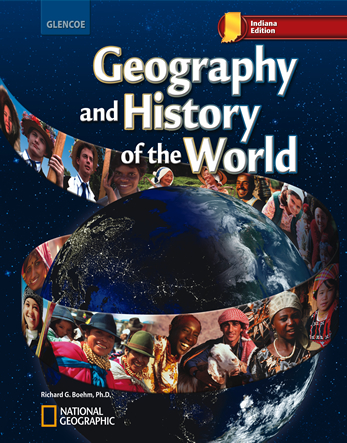Geography and History of the World © 2010 Indiana EditionChapter 31:
The Region Today: Southeast AsiaWeb Activity Lesson Plans“ASEAN” Introduction
In this chapter you read about the economies of nations in Southeast Asia. The region relies heavily on agriculture, forestry, and mining. Yet, in more recent years there has been an increased focus on industry and technology. Regional organizations, such as the Asian Development Bank (ADB) and the Association of Southeast Asian Nations (ASEAN), have helped the nations in this region of the world to be more competitive in the world economy. Lesson Description
Students will study the importance of interdependence and organizations such ASEAN to Southeast Asia. Student Web Activity Answers - The population of ASEAN nations is approximately 500 million, with a land area of 1.5 square miles or 4.5 square kilometers. Indonesia is the largest and Singapore is the smallest
- Student responses may vary depending on the year they find, but figures should be over $700 billion in gross domestic product and over $800 billion in trade.
- The council is an organization of private companies that conduct business with ASEAN and its members. The council is designed to help private companies in the United States have a competitive position in the region.
- Indonesia had the highest unemployment rate, while Cambodia had the lowest rate. Student answers will vary but might discuss the relative size and population of these two nations.
- China, Japan, and South Korea are the additional nations. Student answers will vary but might include that these nations have fairly strong economies with large populations that tend to dominate Southeast Asia. An agreement with these nations would benefit and strengthen ASEAN, by creating beneficial trade relations between all the nations involved.
Activity
Student responses will vary  | 






